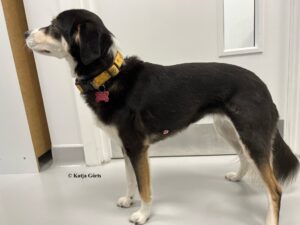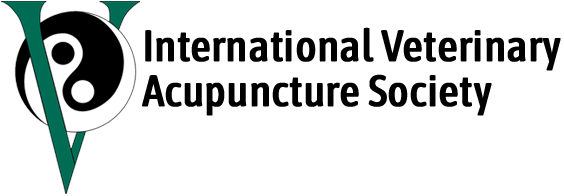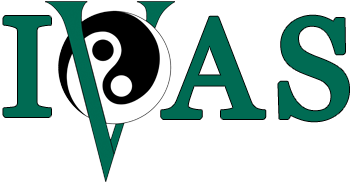Answer to 2023 4th Quarter Name That Point
Name That Point - Katja Görts, DVM, CVA, CVC, CVCH, CVWH

In the horse this point is located in the depression in the 13 intercostals space, at the level of the costochondral junction of the 13th rib. Some authors place this point in the 12th intercostal space at the costochondral junction of the 12th rib.
In the dog it is as in humans being placed in the depression in the 6 intercostal space, caudal to the costochondral junction of the 6th rib.

The point is Front Mu-alarm point as well as the last point of its according channel and also the last point in the great circulation of Qi.
From a TCVM point of view it benefits the Liver function of patency of flow of Qi, dispels food accumulation, benefits the stomach, disperses masses and removes congealed Blood.
Western applications include muscle, liver and stomach problems, abdominal distension, mastitis, hepatitis and pleuritis. Symptoms that are indicative for using this point are: excessive sighing (‘Sighing is the song of the Liver.’), pain on the chest and the lateral costal region and the chest; dyspnoea, enlarged and hard abdomen causing difficulties breathing. Vomiting, especially of fluid after eating, hiccups, acid regurgitation. Colic symptoms after eating in horses; hypocondrial pain, girthiness. Emotional symptoms include mania, agitation, frustration, resentment and anger.
This point is an important point to treat ‘running piglet syndrome’.
The author particularly likes to use this point to treat ‘Liver attacking the Spleen’ conditions, like EGUS in horses and stomach and gallbladder disorders in dogs.
She also uses it a lot as a local point to release tension from the intercostal muscles, open the chest and alleviate breathing e.g., in horses suffering from equine asthma.
The point is Liver 14, Qi Men or Cycle Gate.
References:
- IVAS 2022 Canine Flash Cards
- Maciocia G, The Foundations of Chinese Medicine, 3 rd edition. Elsevier, 2015
- Xie’s Veterinary Acupuncture, 2007
- Deadman P., A Manual of Acupuncture, 1998

